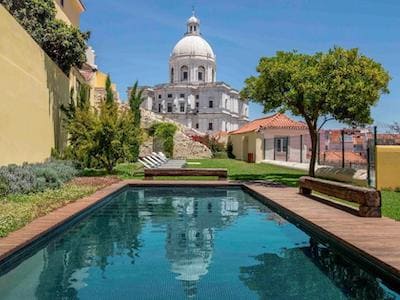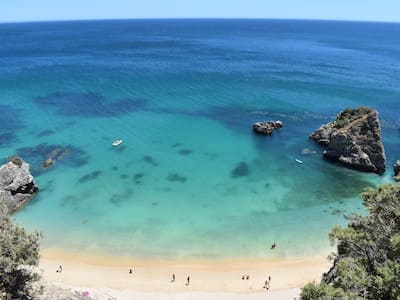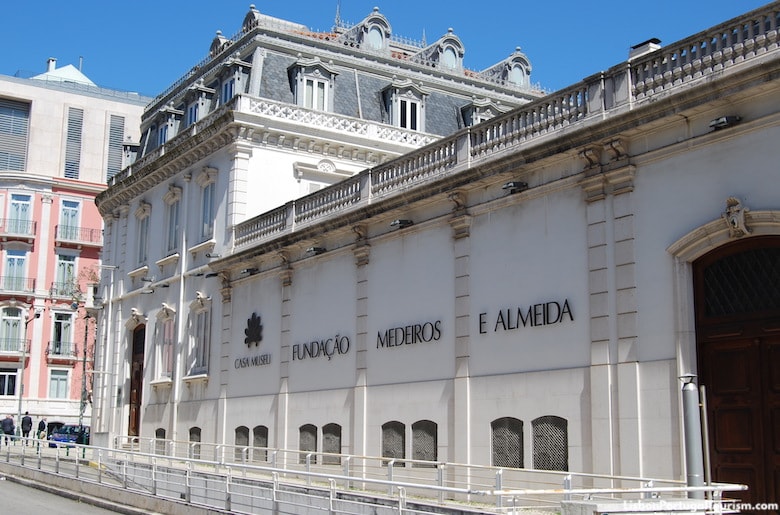
The mansion housing Medeiros e Almeida's art collection
If you enjoy private residences that were turned into museums (such as New York's Frick Collection or London's Wallace Collection), you'll want to visit Lisbon's Medeiros e Almeida Museum. It's housed in a late-1800s mansion where António de Medeiros e Almeida (a renowned businessman) lived and collected works of art. Highlights of the 25 rooms include a Rembrandt portrait, paintings by Rubens, François Boucher and Tiepolo, sophisticated English and Swiss clocks which make up one of the world's most notable private collections of such objects, French furnishings, some of the first Chinese porcelain to arrive in Europe, and a silver tea set used by Napoleon engraved with his symbolic "N".
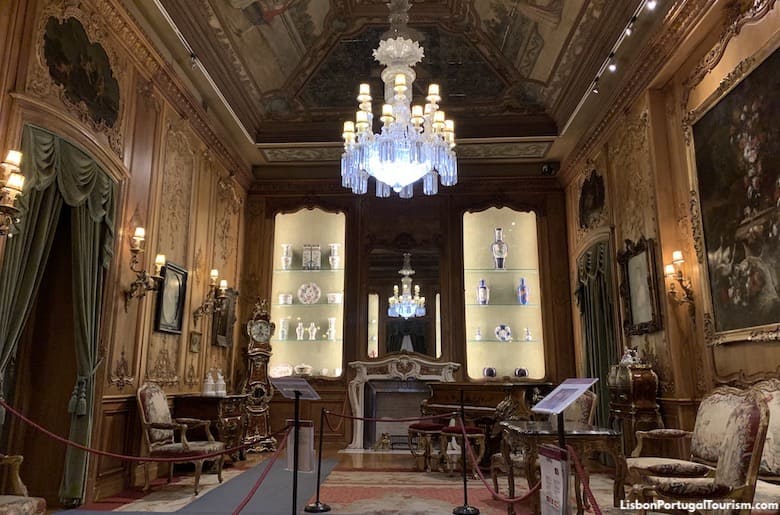
The interior has been preserved much like its owner left it
One of the rooms presents a video narrated in Portuguese and subtitled in English, explaining the life of Medeiros e Almeida and how he acquired so much wealth and such a rich collection.
The museum’s top 10 highlights are:
"Portrait of an Old Man" - Tiepolo
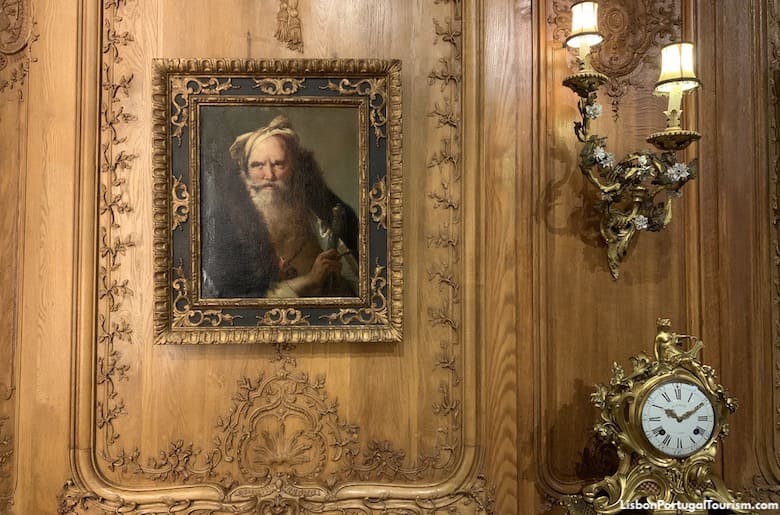
It was one of the collector's most important acquisitions: A painting by Tiepolo from the early 18th century, depicting an old philosopher.
Rembrandt Portrait

A 17th-century painting acquired at an auction in Paris as a magnificent self-portrait of Rembrandt, now seen by experts as a depiction of the famous artist by one of his disciples. Amsterdam's Rijksmuseum fought to get it, but it remains in this museum's Piano Room.
"Virgin of the Milk" - Rubens Studio
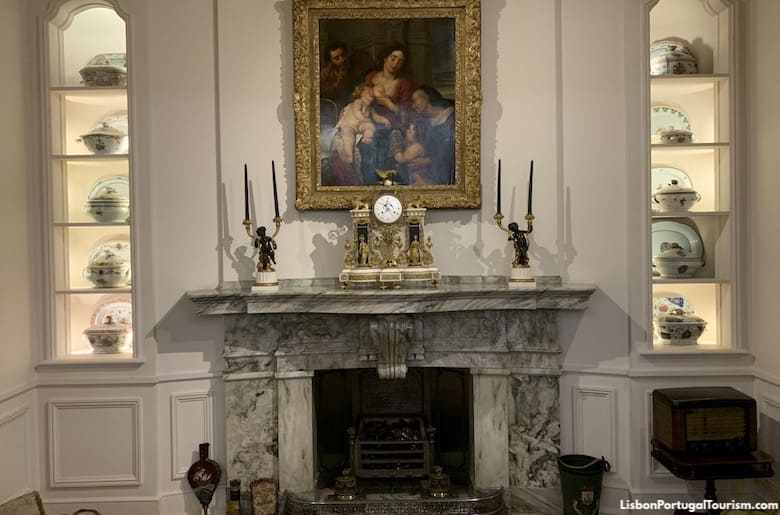
A depiction of the Virgin of the Milk (here accompanied by saints) dating from the 17th century and created in Rubens' studio, where the Flemish artist completely or partially painted works, or simply supervised his disciples.
"The Tax Collector" - Brueghel
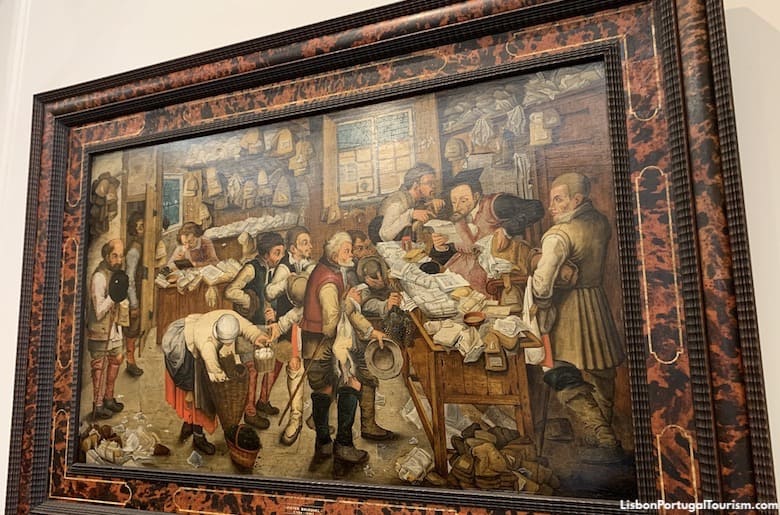
The Flemish painter Pieter Brueghel II recreated this image dozens of times in different sizes. It's a satirical composition dated from 1616, meant to stigmatize the fiscal pressure that the Netherlands endured during the Spanish occupation.
The Lake Room
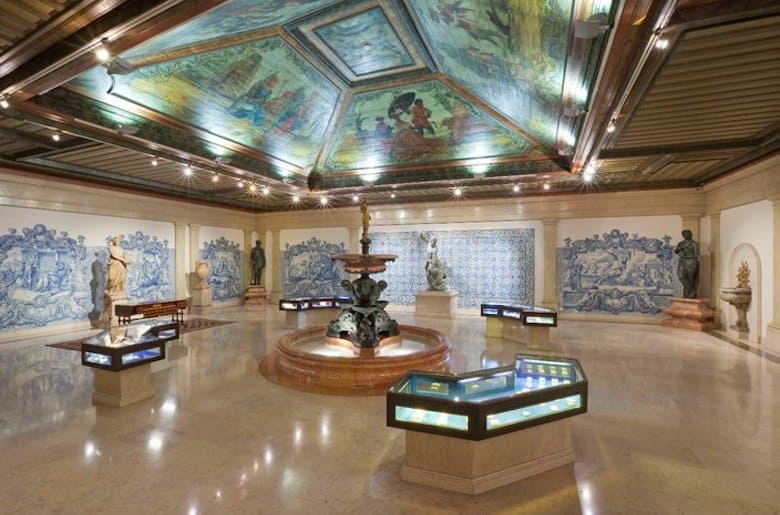
The "Lake Room" is the museum's most beautiful room. Its walls are covered with baroque tile panels representing each continent and each of the four seasons, and at the center is a marble and bronze fountain which originally stood in the gardens of the Palace of Versailles. It's faced by a number of sculptures, including "Veritas," a magnificent marble statue representing a life-size half-naked woman, partially covered by a remarkable "transparent" veil. She's the goddess of truth in Roman mythology, and was sculpted by Raffaelle Monti in 1853. It once stood in London's Royal Academy of Arts and was acquired by Medeiros e Almeida in 1972.
"Catherine of Braganza" - Jacob Huysmans
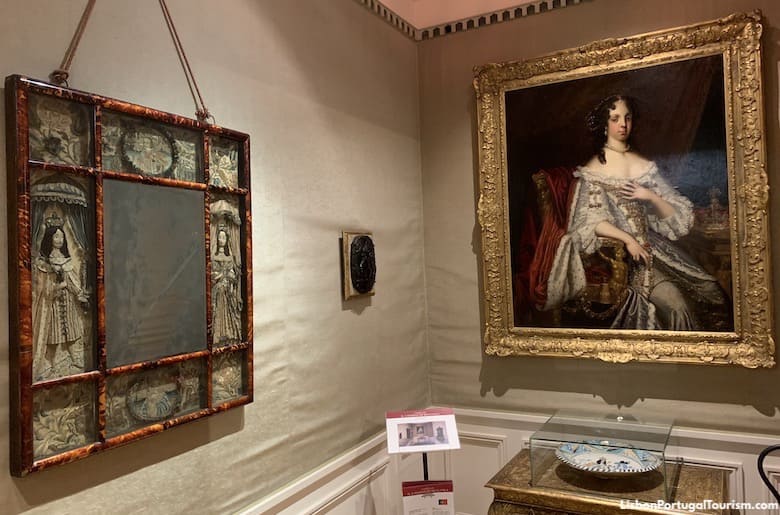
A royal portrait showing the Portuguese princess/queen of England Catherine of Braganza, painted by the Flemish artist Jacob Huysmans in 1667, wearing a royal silk dress next to the British crown. Sharing the same space in the museum are other pieces related to the queen and her husband, such as a clock that stood in the queen's apartments in Whitehall, and a mirror allusive to the royal wedding. Another portrait of Catherine by the same artist is found in London, at the National Portrait Gallery.
Tazza Aldobrandini
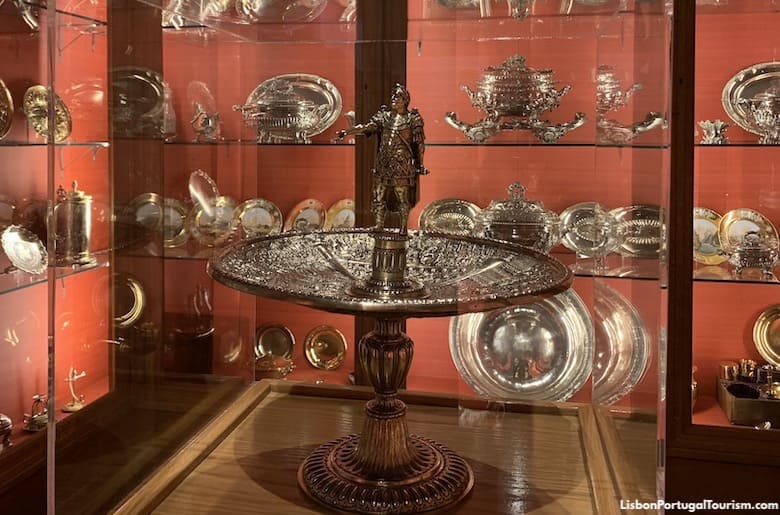
Silver piece that’s part of a group of twelve now spread through different collections around the world, from the Metropolitan Museum of Art in New York to the Victoria & Albert Museum in London. They were all commissioned by Cardinal Ippolito Aldobrandini (later Pope Clement VIII) in 1570, and represent the twelve Roman Caesars. This one shows emperor Galba on a plate alluding to emperor Tiberius.
Sissi Clock
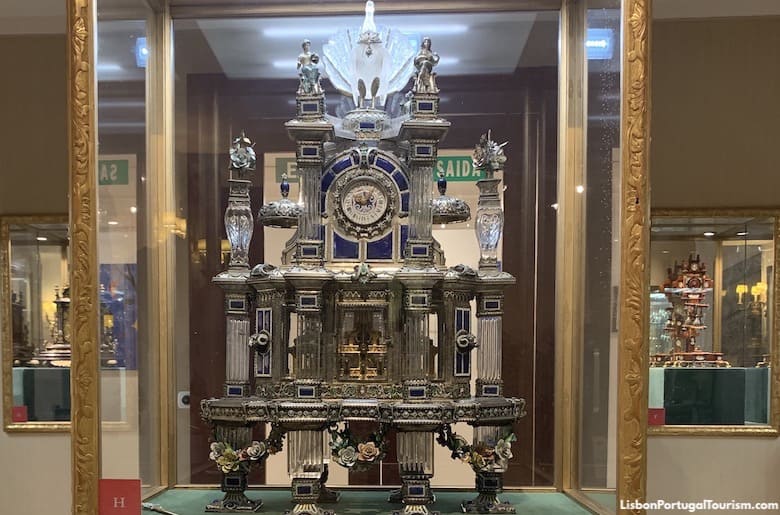
A marvelous clock that was a gift of Prince Louis of Bavaria to his cousin Sissi, empress of the Austro-Hungarian empire. It’s topped by a white peacock (symbol of the Bavarian princes) and the rest is a mixture of crystal and lapis lazuli mounted on silver. It's a precious masterpiece that still operates today.
Breguet Watch
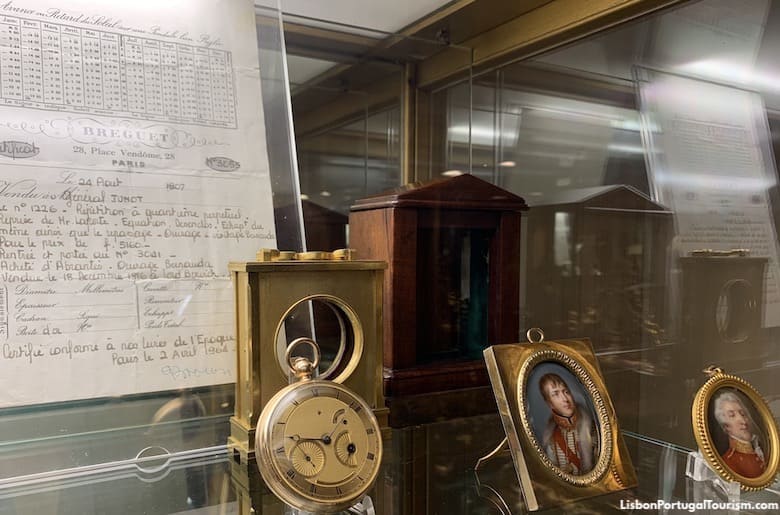
A precious pocket watch that’s made of gold, platinum and enamel. When placed in a metal box it becomes a desk clock. It was commissioned by General Junot to the House of Breguet in Paris in 1808 and was acquired by Medeiros e Almeida at a London auction in 1964. The high price at which it was sold attracted the attention of the British and Portuguese press at the time.
"The Deposition"
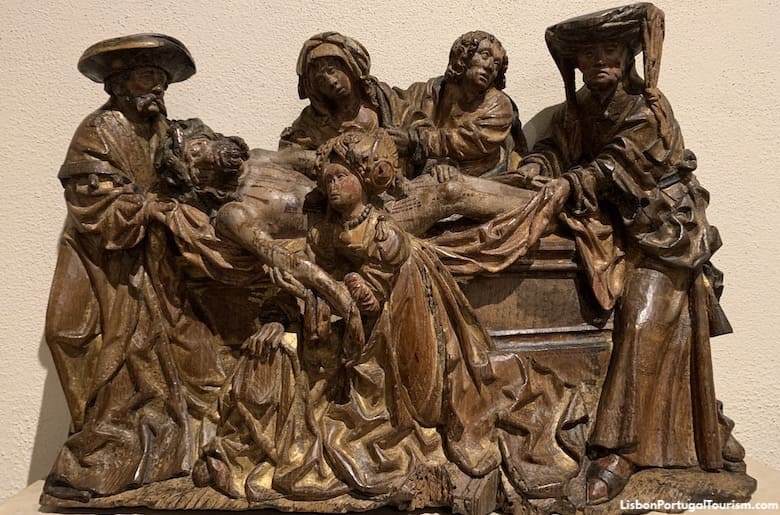
A group of Flemish wooden sculptures representing the deposition of Christ in the tomb. It dates from the 1500s, and its male figures curiously wear hats similar to that of Prince Henry the Navigator's, which apparently was also in style in 16th-century Flanders.
How to Get to the Medeiros e Almeida Museum
The museum is a short walk from the Avenida and Marquês de Pombal stations of the metro. You may ride the metro (and the city’s buses, trams, funiculars and trains) for free with the Lisboa Card.
Rua Rosa Araújo, 41, Avenida da Liberdade
www.casa-museumedeirosealmeida.pt
Admission and Tickets to the Medeiros e Almeida Museum
Admission is €5.00. There’s a 40% discount with the Lisboa Card. It’s free on Saturday mornings from 10am to 1pm.
It's closed on Sundays
Attractions Nearby
A few steps from the museum is Cinemateca, Lisbon’s film museum which screens classic films. From here you can also walk north to Edward VII Park or down Avenida da Liberdade to Rua das Portas de Santo Antão and see the beautiful interior of Casa do Alentejo.

